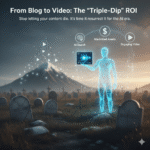LinkedIn Profile News – How To Stand Out in Four Simple Steps
This is how to update your LinkedIn profile. Your business relies on virtual connections so a dull profile won’t cut it.
Many professionals dismiss LinkedIn as a “boring” social network. They simply put a photo of themselves on their profiles and a nondescriptive tagline. Then, they forget all about it for 16 months. A recent survey found that more than 80% percent of business owner use LinkedIn for professional development. It is still the most popular social platform for B2B companies. The survey found that 68% of in-house counsel use LinkedIn for professional purposes. This includes connecting with other counsel, finding business-related news, and networking with colleagues.
Here are four things your LinkedIn profile needs
It is vital to use Linkedin. It can feel overwhelming to update your LinkedIn profile if you have not done so in years. Your LinkedIn profile is an evolving document. It can be modified gradually or updated on an ongoing basis.
Here are four easy steps to help you update your LinkedIn profile.
Step 1 – Start at the Top
These are the key areas to focus on before you dive into your Linkedin profile updates and network. These are your digital first impression.
Your Profile photo
Only one chance to make an impression. Your profile picture is the first thing you should do. You wouldn’t show up at a client meeting looking dirty or untidy. Don’t upload a cropped iPhone photo from a party. You can use your company bio photo, or hire a professional photographer to take a few professional headshots.
These are some key points:
DO take a professional shot.
Do not choose a photo that does not show your neck, head, and shoulders. It should be about 60% of the circle.
A photo that only shows your face should not be chosen.
A photo of your spouse, your dog, or children should not be used.
Don’t use any photo that was taken with your iPhone.
Do not choose a photo from a party or other social event.
Although it may seem unfair, people will not take you seriously if your photo isn’t professional enough. Make sure you invest in a professional photo that shows your authority and competence.
Your Background Photo
Your second chance to make an impression with the header image at the top of your LinkedIn profile. Don’t rely on LinkedIn default photo of a molecular arrangement. This will make your profile look unfinished and lazy.
Some examples of background photos that are good include:
Your company logo.
Your county’s courthouse
The skyline of the place you live and work.
You should choose a scene that is relevant for your area of practice. If you are a business owner who works in construction, look for a high-quality image of a site. If you are a maritime business owner, look for a nice image of a seascape.
Description of your LinkedIn Profile Headline
Your headline statement, which appears directly below your name, is what gives a connection their first impression of you. This is a crucial statement because it tells connections 1) what you are and 2) what makes your connection different. This statement should not be a list of your current position. Instead, describe what you do with your position in a way that reflects both your values and your mission.
Let’s take an example of an estate planning business owner at a small business owner. Here are two different headline descriptions:
Description 1 Associate attorney at Dewey Cheatem and Howe.
Description 2 – Attorney to help families plan for their future, avoid conflict and protect their assets, so that they can leave a legacy.
Tell me, which is better?
This description is not a complete representation of what the attorney does. The description is too vague to help potential clients search for estate planning business owner. The second line, on the other hand, is very descriptive and captures the values of the attorney. It also tells potential clients and referral sources what he does and stands for.
Your tagline is your opportunity to shine. Don’t be afraid to use your tagline! Be descriptive, use adjectives and don’t hesitate to be a bit proud. It will benefit you and those you serve.
Contact Information
Your contact information is one of the most overlooked opportunities. So prospects can reach you, include your phone number and email. You will lose your prospects if you make them search too hard for you.
Step 2 – Tell Your Story
After you have created a digital first impression, it is time to start your “About” section. This section is where you can show your unique angle, i.e. why clients or potential referral sources should choose over your competitors.
Imagine you’re at a cocktail party when someone asks what you do. The “About” section should look like the response you give.
It should be written in the first person
Use complete sentences.
Give us a brief description of what makes you unique. Have 100 cases been tried? Do you have any training in alternative dispute resolution? Are you a veteran in the same area of practice? Are you board certified in a particular practice?
When creating this section of your LinkedIn Profile, remember that the more information you provide and the more detail you provide, the easier it is for someone to locate you through an organic search.
Step 3 – Share Your Experience
Avoid listing your positions and employers in the “Experience” section of your LinkedIn profile update. Imagine what you would say to people at a professional networking event. What responsibilities were you responsible for? What unique contributions did you make?
Think beyond the usual buzzwords diligence and responsiveness when listing your skills. These skills are what people expect from you. Who wants to hire a lazy, inept business owner with poor judgement? You want to highlight traits people wouldn’t expect of you. Are you a Six Sigma expert? Do you have tech skills? Are you tech-savvy? Have you completed diversity training? Are you a time management expert? Are you able to code?
Find out what competitive advantage you have and define these skills.
Step 4 – Engage
If you don’t interact, your LinkedIn profile will quickly become outdated. Consistent activity on LinkedIn will improve your searchability. A consistent presence on LinkedIn will help you build your authority and reputation as a thought leader. It also allows for interaction through comments, connections, shares and shares. You’ll be kept informed about new developments in your industry and the career moves of your colleagues.
It can feel impossible to take on another task if you’re already overwhelmed. It doesn’t have it to. It’s easy to stay engaged on LinkedIn if you have specific goals.
Stay within your area of expertise when curating and sharing content. To avoid overloading your content, only follow pages and people that are relevant to you industry and practice area.
To avoid interruptions to your workday, make sure you check your notifications at least twice per week.
Make sure to share content that is useful for your connections. Avoid topics that are too polarizing or incendiary.
Use LinkedIn to Build Relationships, Encourage Meaningful Discussion, and Increase Business
LinkedIn success is possible and achievable. Engage actively to get the most out of LinkedIn. Engage in meaningful and relevant discussion and make a habit out of regularly checking your profile. Your incremental efforts will soon pay off in the form new connections, relationships, and business opportunities.






